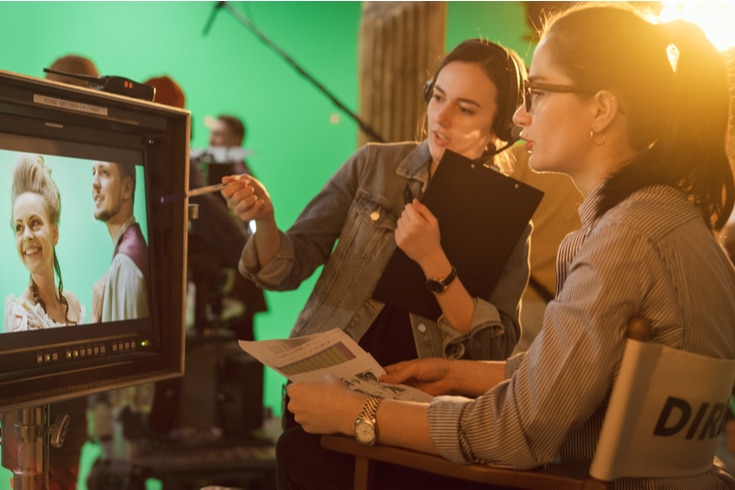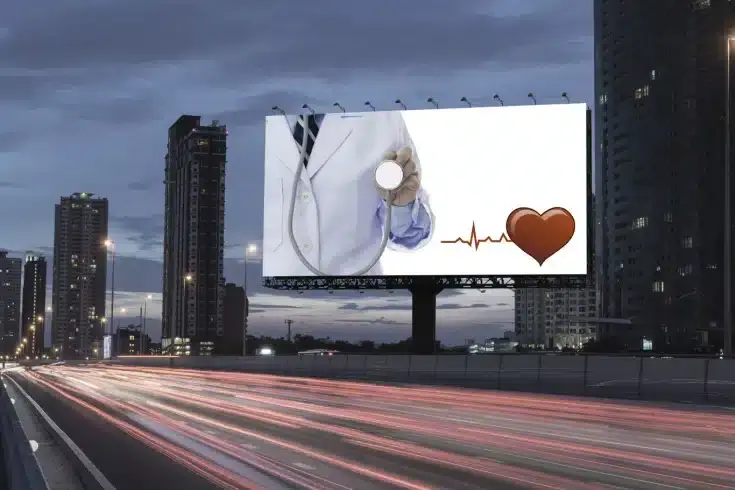Key Points to Check in Advertising Appearance Contracts Between IT Companies and Celebrities

As IT companies grow and advance, corporate advertising and product advertising are effective means to enhance social credibility, recognition, and brand image.
By hiring popular celebrities or actors, you can increase the attention to your advertisements and improve the image of your company and products. However, if you misuse photos or videos, you may be subject to claims for damages.
Therefore, in this article, we will explain in detail the important points to be aware of in the advertising performance contract that IT companies enter into with celebrities and others.
The Importance of “Publicity Rights” in Advertising Contracts
When a popular celebrity appears in a product commercial, the sales of that product increase. This is because the celebrity’s name and fame have the power to attract customers, in other words, they have “economic value”.
The right to legally protect an individual’s name and publicity and prevent their unauthorized use is called “publicity rights”. If a third party uses a person’s photo and such in a product advertisement without their permission, they may be liable for damages, injunctions against sales, disposal of the product, and apology advertisements for infringing on publicity rights.
While an advertising contract directly stipulates the compensation and other conditions for the celebrity’s appearance in the advertisement, the most important aspect is obtaining the permission of the rights holder (the individual or their management company) for the scope, duration, and region of the publicity rights.
Key Points to Check in Advertising Appearance Contracts
From here, we will explain in detail the key points to check based on a sample contract. Generally, the contract involves three parties: the advertiser, the talent agency, and the advertising agency.
Note: The parties to the contract are the advertiser (Party A), the talent agency (Party B), and the advertising agency (Party C). The talent affiliated with Party B appearing in the contract is referred to as Party D.
Scope of Permission for Use of Portraits and Names, etc.
Article 4 (Permission for Use in Advertising)
Party B hereby grants permission to Parties A and C to use Party D’s voice, name (including signature), likeness (including caricatures, figures, etc. approved by Party B), and biography, etc. (hereinafter collectively referred to as “Party D’s Portrait Rights, etc.”) in the media listed in the following items in relation to the subject advertisement. However, media that can be downloaded and harmful sites containing content against public order and morals are excluded.
① TV and radio advertisements (including BS broadcasting, CS broadcasting, CATV, etc.)
② Indoor and outdoor advertisements, transportation advertisements (including street vision, cine ads, train channel inside train cars, etc.)
③ Communication network advertisements (including websites, banner ads, smartphone apps, etc.)
④ Printed advertisements such as newspapers, magazines, posters, catalogs, pamphlets, POP, direct mail, etc.
⑤ Movie and slide advertisements
⑥ Publicity
⑦ Premiums and novelties
⑧ Company profiles, business reports, company histories, and other records of Party A
⑨ Participation and application to various commercial conventions, provision to programs and articles featuring commercials, etc.
⒉ Party A shall obtain prior approval from Party B through Party C each time it uses Party D’s Portrait Rights, etc. in the items in the preceding paragraph.
This clause is one of the most important clauses in an advertising performance contract, and it is necessary to list all possible media to avoid trouble with talent agencies.

Checkpoint 1
In the first part of this article, it is stated that “permission is granted to use the media listed in the following items.” However, as it stands, the usage fee and the number of uses are not clear.
In an advertising performance contract, a fee is paid for the “performance”, but the use of the produced “advertisement” is generally free of charge. Therefore, it would be better to revise it to say, “Permission is granted to use the media listed in the following items freely (or without limitation on the frequency of use) free of charge”.
Checkpoint 2
Regarding item 6 of the first paragraph, “Publicity”, it is now indispensable to use SNS for public relations activities, so it is recommended to add “including posts on Twitter, YouTube, Facebook, LINE, etc.”
Checkpoint 3
In the second paragraph, it is stipulated that “prior approval shall be obtained each time for the use of Party D’s Portrait Rights, etc.” However, since permission has already been obtained in the preceding paragraph, this paragraph should be deleted.
If it is a provision about the obligation to report, please choose a method that minimizes the burden on the advertiser, such as “Party A shall report to Party B through Party C every ○ months regarding the use of Party D’s Portrait Rights, etc. as stipulated in the items of the preceding paragraph.”
Prohibition of Appearances Related to Competing Companies/Products
Article 6 (Competition Prohibition)
From the date of this contract until the end of the usage period, Party B shall not allow Party C to appear in, or grant permission to use Party C’s portrait rights, etc., in the advertising and promotional activities specified in the following items:
① Advertising and promotion by a third party engaged in a business similar to or identical with Party A’s main business, which is the development, operation, and sale of accounting systems.
② Advertising and promotion by a third party targeting products similar to or identical with Party A’s main product, the XX accounting system.
When Party B grants permission to a third party to use Party C’s portrait rights, etc., in advertising and promotion, if it is unclear whether the advertising and promotion falls under the items in the preceding paragraph, Party B shall contact Party C in advance and decide whether it is permissible after discussion among Parties A, B, and C.
Appearances in television and radio programs, plays, concerts, etc., as the original Party C, shall not be subject to the restrictions of this Article, except for those solely sponsored by a third party competing with Party A.
Checkpoint 1
The “restriction on competing companies” in Item 1 of Paragraph 1, in other words, means that Party A will have exclusive use of Party C’s portrait rights, etc., in one industry.
This provision significantly restricts the economic activities of celebrity Party C, and there is a possibility that an “exclusive contract fee” may be demanded in addition to the consideration. Therefore, we recommend that you carefully consider the cost-effectiveness before making a decision.
Checkpoint 2
The “restriction on competing products” in Item 2 of Paragraph 1 is more limited in scope than the “restriction on competing companies”, but it still affects the economic activities of celebrity Party C. Although the amount is lower than the “exclusive contract fee”, there is a possibility that a “restraint fee” may be demanded.
Whether an “exclusive contract fee” or a “restraint fee” is demanded depends on the celebrity’s popularity and the amount of consideration. Therefore, it is necessary to consider your advertising strategy and budget and have sufficient discussions with Parties B and C in advance.

Contract Fee and Appearance Fee
Article 7 (Consideration)
Party C shall pay Party B a contract fee of ¥X million (excluding consumption tax and local consumption tax) and an appearance fee of ¥X million (excluding consumption tax and local consumption tax) for the TV commercial shooting and still photo shooting under this contract, by transferring the amount to a bank account designated by Party B by XX year, XX month, XX day.
No usage fee shall be incurred for the purposes set forth in Article 4, Paragraph 1, Items 8 and 9, even after the end of the usage period for this matter.
(Omitted below)
Checkpoint
“Article 4, Paragraph 1, Items 8 and 9” refers to the use in company brochures and other materials and the display at various commercial conventions, but the clause in Paragraph 2, “No usage fee shall be incurred even after the end of the usage period for this matter,” does not mention the license for use after the end of the usage period.
Since it is conceivable that company brochures and other materials may be recreated, it would be better to clearly state that “they can be used free of charge even after the end of the usage period for this matter.”
About Damages

Article 10 (Damages)
When either Party A, Party B (including Party D), or Party C falls under any of the following items, the other party to the offending party can terminate this contract and/or claim compensation for the damages suffered.
(a) If Party B (including Party D) performs an act that tarnishes the image or social credibility of Party A or Party A’s products.
(b) If Party D is unable to appear due to a reason attributable to Party B (including Party D).
(c) If there is a breach of this contract.
(d) If an act is performed that hinders the performance of this contract.
Checkpoint 1
The opening clause refers to “the other party to the offending party”. In a contract between two parties or two groups, “the other party” is clear, but in a contract with three or more parties with different positions, use “the other parties” or “the other party”.
Also, since Party D is not a party to the contract, if damage occurs due to Party D’s actions, a claim for damages will be made against the affiliated talent agency (Party B).
Checkpoint 2
In recent times, there have been cases where a celebrity’s scandal or a thoughtless tweet has become a major issue. Therefore, it is important to cover as many foreseeable cases as possible to minimize the risk for advertisers and advertising agencies.
Summary: Consult Lawyers in Creating ads Contract with a Celebrity
In this article, we have discussed the key points to check in advertising appearance contracts between IT companies and celebrities, focusing on important clauses such as “the scope of permission to use portraits and names”, “prohibition of appearances related to competing companies/products”, “contract fees and appearance fees”, and “damage compensation”.
The contract sample we used was a tripartite agreement between the advertiser, the talent agency, and the advertising agency. However, there are various cases, such as a four-party contract including a production company. Therefore, when creating a contract or discussing with the other party, we recommend consulting with a lawyer who has specialized knowledge and rich experience, rather than making a decision on your own.
Our Firm’s Approach
Monolith Law Office is a legal practice with high expertise in both IT, particularly the internet, and law.
When safely utilizing subsidy agency services, it is necessary to create contracts. Our firm handles the creation and review of contracts for various cases, from companies listed on the Tokyo Stock Exchange Prime Market to venture businesses.





















